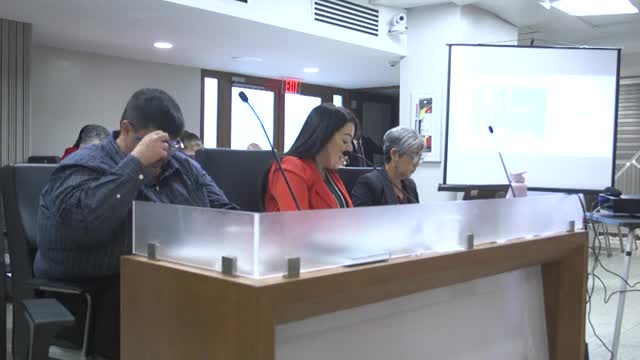Restoration efforts underway for Lajas lagoon amid severe environmental and public health challenges
February 07, 2024 | Senate, Committees, Legislative, Puerto Rico

This article was created by AI summarizing key points discussed. AI makes mistakes, so for full details and context, please refer to the video of the full meeting. Please report any errors so we can fix them. Report an error »

The February 7 public hearing of the Central South Region Development Commission focused on the critical state of the Laguna de Papayo, highlighting decades of environmental degradation and the urgent need for restoration efforts. The meeting began with a historical overview of the lagoon, noting its connection to the sea in the 1930s, which supported a healthy mangrove ecosystem. However, by the 1950s, significant alterations began, including the removal of mangroves for salt extraction and subsequent urban development, leading to a loss of wetland area.
As of the 2000s, the lagoon has lost its hydrological connection to the sea, only flooding during the rainy season or extreme tides. This disconnection has resulted in severe mangrove loss and public health issues, including air quality degradation due to sediment suspension. The local community, historically underserved and impoverished, faces additional challenges as many residents live below the poverty line.
The meeting also addressed ongoing restoration efforts led by watershed protectors in collaboration with the U.S. Fish and Wildlife Service. Plans include reconnecting the lagoon to the sea and removing sediment deposits to restore natural conditions. However, anthropogenic impacts, such as human development and inadequate septic systems, pose significant challenges to these efforts.
A comprehensive assessment identified twenty potential sites contributing to the lagoon's degradation, with many linked to human activities like land filling and the presence of livestock. The meeting underscored the need for further evaluations of septic systems and the impact of nearby developments, including short-term rentals.
The discussion concluded with a call for additional funding to enhance enforcement and monitoring efforts in the area, emphasizing the importance of protecting Puerto Rico's natural resources for future generations. The commission expressed gratitude for the opportunity to present their findings and reiterated their commitment to addressing the environmental challenges facing the lagoon and its surrounding community.
As of the 2000s, the lagoon has lost its hydrological connection to the sea, only flooding during the rainy season or extreme tides. This disconnection has resulted in severe mangrove loss and public health issues, including air quality degradation due to sediment suspension. The local community, historically underserved and impoverished, faces additional challenges as many residents live below the poverty line.
The meeting also addressed ongoing restoration efforts led by watershed protectors in collaboration with the U.S. Fish and Wildlife Service. Plans include reconnecting the lagoon to the sea and removing sediment deposits to restore natural conditions. However, anthropogenic impacts, such as human development and inadequate septic systems, pose significant challenges to these efforts.
A comprehensive assessment identified twenty potential sites contributing to the lagoon's degradation, with many linked to human activities like land filling and the presence of livestock. The meeting underscored the need for further evaluations of septic systems and the impact of nearby developments, including short-term rentals.
The discussion concluded with a call for additional funding to enhance enforcement and monitoring efforts in the area, emphasizing the importance of protecting Puerto Rico's natural resources for future generations. The commission expressed gratitude for the opportunity to present their findings and reiterated their commitment to addressing the environmental challenges facing the lagoon and its surrounding community.
View full meeting
This article is based on a recent meeting—watch the full video and explore the complete transcript for deeper insights into the discussion.
View full meeting